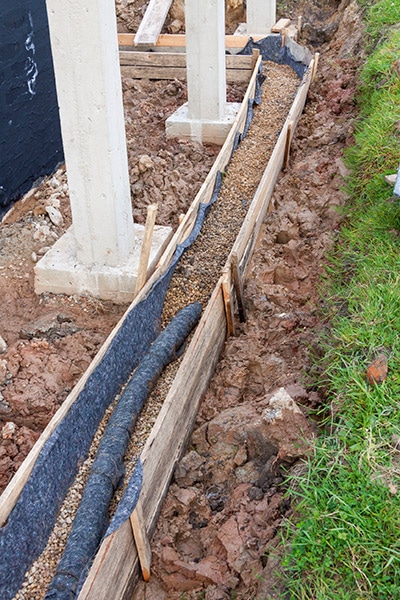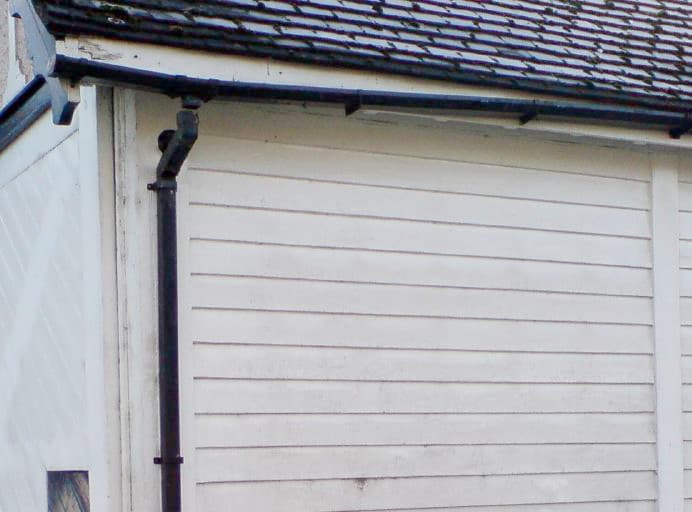In Texas, when it rains, it pours. Living in any area of the United States that gets a lot of rain during the winter can be hard. Regular rainfall for months can test your home’s gutter system, too. If it wasn’t built with quality in mind, it could hurt you in the long run, leading to serious issues with your home’s foundation. Follow these easy steps to guard against severe water damage to your gutters:
- Confirm that your home is ready for heavy rainfall by cleaning your gutters.
- Check your gutters for rust or corrosion
- Inspect your downspouts for clogs, damage, and proper drainage away from your home.
- Consider flexible extensions or installing French drains if needed.
- Think about investing in long-term solutions such as a new rain gutter protection system that will support your home’s gutters from the pressure of heavy rain

To prepare for severe weather, clean your gutters out regularly. If they are not cleaned properly, they will not carry water away from the eaves of your home. If water pools around your eaves, it may lead to dry rot, which can be expensive to repair. Dry rot can result from too much moisture contacting wood, which weakens wood or causes it to disintegrate.
Cleaning your gutters is easier in dry weather. It can be as simple as grabbing a bucket and a sturdy ladder. While leaves are the typical cause of debris, be sure to check for sand or dirt. Large amounts of these kinds of residue can cause erosion or change the pitch of your gutters. If you have many trees near your house, you may have to unclog your gutters multiple times during the fall.


When inspecting your gutters, be sure to seal any small cracks in your gutters with a sealant or strong adhesive. Also, if you have steel gutters, check for any exposed metal as bare metal tends to rust faster. Be sure to paint over these exposed areas, as a rusted gutter will likely need replacing.
Additionally, aluminum gutters need to be checked for corrosion. Corrosion can occur when aluminum touches another metal. Additionally, corrosion may also happen when gutters are subject to chemicals from treated lumber, concrete or stucco.

You’ll Be Sad if Your Gutters Sag
If you have any sagging gutters, it is likely that the brackets are worn or loose. Consider a thorough gutter repair by replacing worn brackets. Also, ensure that your gutters are at an angle to let water flow to the downspout.
Make sure to check that the downspouts are working right or have any cracks. Downspouts should be forcing water to flow away from the foundation of your home, not toward your home. American Hill Country Gutters can handle any repairs or corrections your gutters might need.
Water Water Everywhere
 The primary function of a gutter is to get water away from your house. If you don’t have a gutter, water can pool in places like an exposed foundation. When this happens, the water can drain under the footing of the foundation wall. Too much drainage can cause your home to sink in certain areas, shifting your foundation and resulting in a lot of costly repairs.
The primary function of a gutter is to get water away from your house. If you don’t have a gutter, water can pool in places like an exposed foundation. When this happens, the water can drain under the footing of the foundation wall. Too much drainage can cause your home to sink in certain areas, shifting your foundation and resulting in a lot of costly repairs.
Sometimes, building crews irrigate your home properly and direct water to where it needs to go. A ditch is often dug close by and lined with gravel and a plastic drain pipe. This will carry the pooling water to the right drainage location, such as the street. Something to help out your existing irrigation would be seamless gutters. Seamless gutters are not very expensive and are durable for rain and hail.
As opposed to do-it-yourself filters and mesh from a hardware store, professionally installed home gutter systems guard against possible clogging. Protection systems that use sturdy bracketing help reinforce your home’s gutters against heavy rain fall.
Proper care and professional installation can give you extra peace when weathering the crazy weather!







